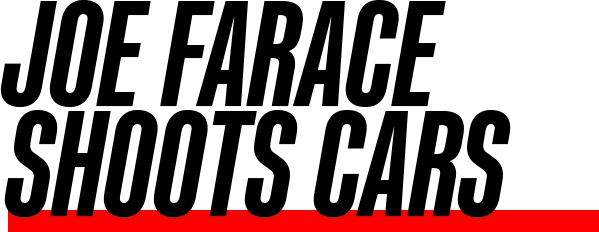Today’s Post by Joe Farace
One of the classic rules about photography is that light has four major qualities: color, quality, quantity, and direction. As photographers who are seeking to master the art of exposure, seeing that light is the key to mastering the art of exposure, especially when it comes to photographing cars.
 Learning to see light is not difficult but takes some practice by not just constantly making new images—it doesn’t have to be of cars—but also taking the time to analyze those photographs after you’ve created them. For example, the exposure for the black Jaguar (above) was 1/320 sec at f/8 and ISO 400, which is one and one-third stops less that the camera indicated as “correct.”
Learning to see light is not difficult but takes some practice by not just constantly making new images—it doesn’t have to be of cars—but also taking the time to analyze those photographs after you’ve created them. For example, the exposure for the black Jaguar (above) was 1/320 sec at f/8 and ISO 400, which is one and one-third stops less that the camera indicated as “correct.”
I’ve always believed that camera’s designers realized that no amount of automation will produce a perfect exposure under all possible lighting situations and what some people might consider the correct exposure. others might not. You are the final arbiter of what’s really correct. To help you home in on an ideal exposure, your camera’s Exposure Compensation feature lets you increase or decrease the automatic exposure by your choice of one-half or one-third tops to get the exposure you like. (I prefer one-third stops but this is not a “my way or the highway” blog.) Using the camera’s LCD screen and histogram can help you fine tune what what you really this is best.
 One of the first tips that I give aspiring car photographers is that they should underexpose black cars to render them as black and overexpose white ones, so they look white. When you think about this concept, it makes perfect sense: By forcing the exposure to middle gray tones, you’ll end up with a white car that looks gray or a black car that looks gray too. For example, the exposure for the white Nissan Skyline (above) was 1/500 sec at f/10 and ISO 200, which is two-thirds stops more that the camera indicated as “correct.”.
One of the first tips that I give aspiring car photographers is that they should underexpose black cars to render them as black and overexpose white ones, so they look white. When you think about this concept, it makes perfect sense: By forcing the exposure to middle gray tones, you’ll end up with a white car that looks gray or a black car that looks gray too. For example, the exposure for the white Nissan Skyline (above) was 1/500 sec at f/10 and ISO 200, which is two-thirds stops more that the camera indicated as “correct.”.
For more on this subject, check out my post Understanding Digital Exposure Techniques when you have time.
 If you enjoyed today’s blog post and would like to treat Joe to a cup of Earl Grey tea ($2.75, Starbucks has raised the price of Earl Grey), click here. And if you do, many thanks.
If you enjoyed today’s blog post and would like to treat Joe to a cup of Earl Grey tea ($2.75, Starbucks has raised the price of Earl Grey), click here. And if you do, many thanks.
Along with photographer Barry Staver, Joe is co-author of Better Available Light Digital Photography that’s out-of-print but new copies are available for $21.49 from Amazon or used copies at prices that are all over the place. Kindle version, for some reason, is really expensive.
